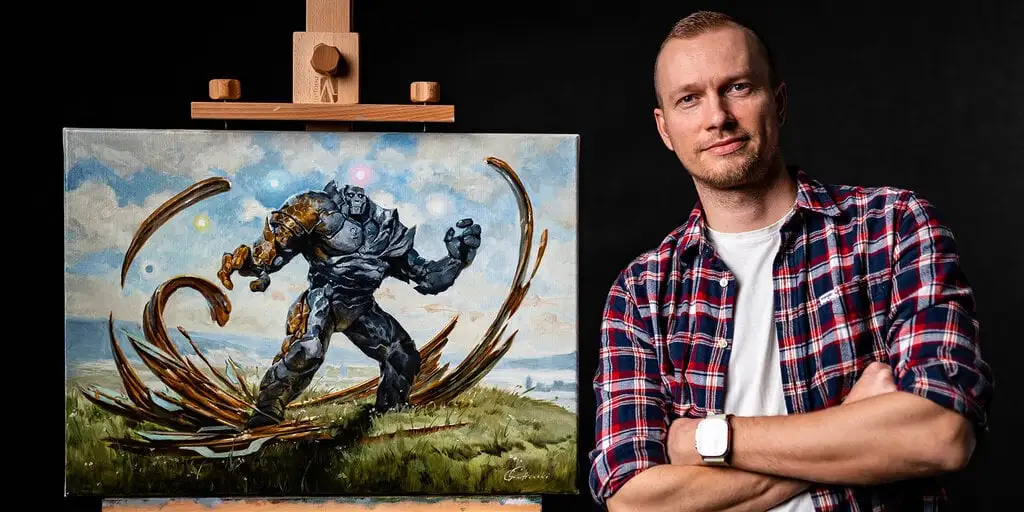Greg Rutkowski, a digital artist known for his surreal style, opposes AI art but his name and style have been frequently used by AI art generators without his consent. In response, Stable Diffusion removed his work from their dataset in version 2.0. However, the community has now created a tool to emulate Rutkowski’s style against his wishes using a LoRA model. While some argue this is unethical, others justify it since Rutkowski’s art has already been widely used in Stable Diffusion 1.5. The debate highlights the blurry line between innovation and infringement in the emerging field of AI art.



What blurry line? An artist doesn’t what his art stolen from him. Seems pretty cut and dry to me.
I don’t disagree but stolen is a bit of a stretch
Nothing was stolen.
Drawing inspiration from someone else by looking at their work has been around for centuries.
Imagine if the Renaissance couldn’t happen because artists didn’t want their style stolen.
His art was not “stolen.”
If I look at someone’s paintings, then paint something in a similar style did I steal their work? Or did I take inspiration from it?
No, you used it to inform your style.
You didn’t drop his art on to a screenprinter, smash someone else’s art on top, then try to sell t-shirts.
Trying to compare any of this to how one, individual, human learns is such a wildly inaccurate way to justify stealing a someone’s else’s work product.
If it works correctly it’s not a screenprinter, it’s something unique as the output.
The fact that folks can identify the source of various parts of the output, and that intact watermarks have shown up, shows that it doesn’t work like you think it does.
They can’t, and “intact” watermarks don’t show up. You’re the one who is misunderstanding how this works.
When a pattern is present very frequently the AI can learn to imitate it, resulting in things that closely resemble known watermarks. This is called “overfitting” and is avoided as much as possible. But even in those cases, if you examine the watermark-like pattern closely you’ll see that it’s usually quite badly distorted and only vaguely watermark-like.
Yes, because “imitate” and “copy” are different things when stealing from someone.
I do understand how it works, the “overfitting” was just laying clear what it does. It copies but tries to sample things in a way that won’t look like clear copies. It had no creativity, it is trying to find new ways of making copies.
If any of this was ethical, the companies doing it would have just asked for permission. That they didn’t says a everything you need to know.
I don’t usually have these kinds discussions anymore, I got tired of conversations like this back in 2016, when it became clear that people will go to the ends of the earth to justify unethical behavior as long as the people being hurt by it are people they don’t care about.
And we’re back to you calling it “stealing”, which it certainly is not. Even if it was copyright violation, copyright violation is not stealing.
You should try to get the basic terminology right, at the very least.
Just because you’ve redefined theft in a way that makes you feel okay about it doesn’t change what they did.
They took someone else’s work product, fed it into their machine then used that to make money.
They stole someone’s labor.
Does that mean the AI is not smart enough to remove watermarks, or that it’s so smart it can reproduce them?
It’s not smart or stupid. It does what it’s been trained on, nothing more.
It means that it’s stupid enough that it reproduces them - poorly.
LLMs and directly related technologies are not AI and possess no intelligence or capability to comprehend, despite the hype. So, they are absolutely the former, though it’s rather like a bandwagon sort of thing (x number of reference images had a watermark, so that’s what the generated image should have).
That’s debatable. LLMs have shown emergent behaviors aside from what was trained, and they seem to be capable of comprehending relationships between all sorts of tokens, including multi-modal ones.
Anyway, Stable diffusion is not an LLM, it’s more of a “neural network hallucination machine” with some cool hallucinations, that sometimes happen to be really close to some or parts of the input data. It still needs to be “smart” enough to decompose the original data into enough and the right patterns, that it can reconstruct part of the original from the patterns alone.
Thanks for the clarification!
LLMs have indeed shown interesting behaviors but, from my experience with the technology and how it works, I would say that any claims of intelligence being possessed by a system that is only an LLM would be suspect and require extraordinary evidence to prove that it is not mistaken anthropomorphizing.
It’s like staring yourself blind at artworks with watermarks until you start seeing artworks with blurry watermarks in your dreams